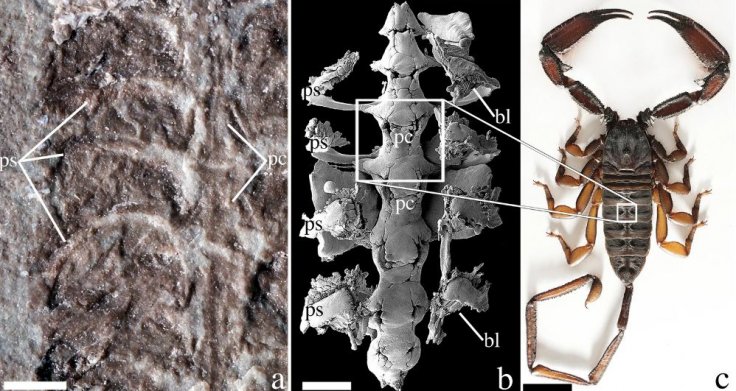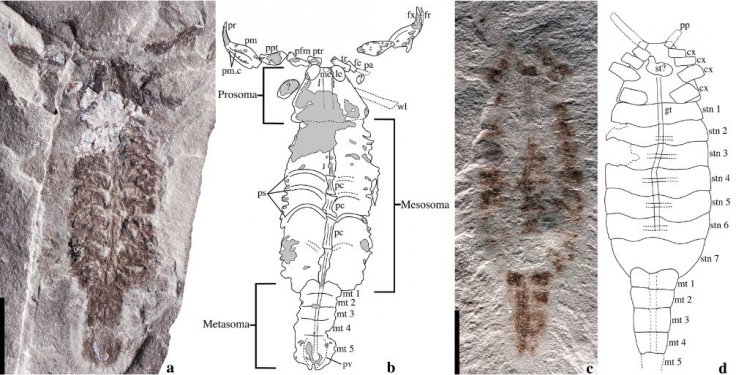The question related to the early inhabitants of earth always excites science enthusiasts. In a recent research, scientists have described a 436-million-year-old scorpion who was one of the early ancestors of modern creatures.
As per the newly published study, the creature was dating back to the era when continental landmasses were low and sea levels were rising. It is known as the Silurian Period which occurred from 443 million to 416 million years ago. The researchers claimed that the study of this ancient creature is very important as it shows evidence of migration from aquatic to terrestrial habitats.
The scorpion fossil finding and the study
The researchers found the fossils of Parioscorpio Venator in Wisconsin back in 1985, but instead of being part of a research study, these ancient fossils were kept secured at the University of Wisconsin. But palaeontologists Loren Babcock from Ohio State University and Andrew Wendruff from Otterbein University understood the potential behind these fossils and then they conducted the study which answered very important queries about the ancient creatures.
The scorpion study

The early studies claimed that the oldest scorpion fossil belonged to Scotland's Dolichophonus loudonensis, which lived on earth at around 434 million years ago. But the new finding has demoted Scotland's creature as the newly described scorpion is almost one to three million years older than the Dolichophonus loudonensis.
In the new research study which was published in Scientific Reports, the ancient creature was described as Parioscorpio Venator, which means "progenitor scorpion hunter." It is now labelled as the oldest scorpion in the fossil record. The researchers claimed that this creature used to live on earth sometimes between 437.5 and 436.5 million years ago.
As of now, researchers have discovered two such fossils t at the former site of a shallow, tropical sea which used to live along with other marine creatures, such as trilobites, cephalopods, worms, and other arthropods.
Parioscorpio Venator

This ancient scorpion was an aquatic creature but as per the new study, its unique anatomy suggests that it was also capable of living on the land. This unique fact led the researchers to believe that it is the earliest air breathers known to science.
It should be mentioned that the scorpions are one of the first animals who had fully transition to a terrestrial mode of life. Scientists claimed that this fossils study is very important as it has shown what changes they had adapted to become a creature of the land.
It should be mentioned that both the researchers used a technology called biostratigraphy to take a close look at these fossils. By using microscopes and high-resolution imagery the palaeontologist came to know that the Parioscorpio measured around 2.5 centimetres in length and it had features seen in living scorpions such as a stinger on the tip of its tail as well as a small chamber where the scorpion's venom was stored.
The research also revealed that the Parioscorpio didn't have lungs or gills, but it did feature an hourglass-shaped narrow structure which is similar to the circulatory and respiratory systems seen in modern scorpions and also horseshoe crabs. So scientists believe that these anatomical features probably helped Parioscorpio to live and breath on the land.
Silurian Period
Since this study is on a creature who belonged to the Silurian Period some facts should be known about that time. It was the third period in the Paleozoic Era that followed the Ordovician Period and preceded the Devonian Period. The fossils from this era show evidence of extensive reef-building and the first signs that life beginning to colonize the new estuary, freshwater and terrestrial ecosystems.
During this time the climate was generally warm and stable, which had provided one of the most significant developments, the arrival of the first plants to colonize the land.









